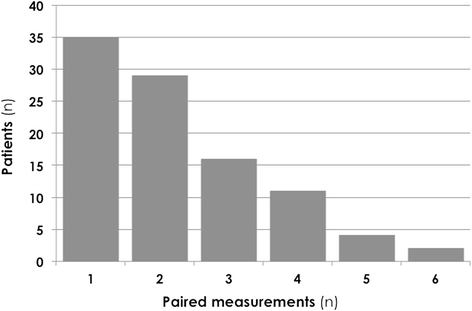Central venous-to-arterial carbon dioxide difference combined with arterial-to-venous oxygen content difference is associated with lactate evolution in the hemodynamic resuscitation process in early septic shock
- PMID: 25888382
- PMCID: PMC4384363
- DOI: 10.1186/s13054-015-0858-0
Central venous-to-arterial carbon dioxide difference combined with arterial-to-venous oxygen content difference is associated with lactate evolution in the hemodynamic resuscitation process in early septic shock
Abstract
Introduction: Since normal or high central venous oxygen saturation (ScvO₂) values cannot discriminate if tissue perfusion is adequate, integrating other markers of tissue hypoxia, such as central venous-to-arterial carbon dioxide difference (PcvaCO₂ gap) has been proposed. In the present study, we aimed to evaluate the ability of the PcvaCO₂ gap and the PcvaCO₂/arterial-venous oxygen content difference ratio (PcvaCO₂/CavO₂) to predict lactate evolution in septic shock.
Methods: Observational study. Septic shock patients within the first 24 hours of ICU admission. After restoration of mean arterial pressure, and central venous oxygen saturation, the PcvaCO₂ gap and the PcvaCO₂/CavO₂ ratio were calculated. Consecutive arterial and central venous blood samples were obtained for each patient within 24 hours. Lactate improvement was defined as the decrease ≥ 10% of the previous lactate value.
Results: Thirty-five septic shock patients were studied. At inclusion, the PcvaCO₂ gap was 5.6 ± 2.1 mmHg, and the PcvaCO₂/CavO₂ ratio was 1.6 ± 0.7 mmHg · dL/mL O₂. Those patients whose lactate values did not decrease had higher PcvaCO₂/CavO₂ ratio values at inclusion (1.8 ± 0.8vs. 1.4 ± 0.5, p 0.02). During the follow-up, 97 paired blood samples were obtained. No-improvement in lactate values was associated to higher PcvaCO₂/CavO₂ ratio values in the previous control. The ROC analysis showed an AUC 0.82 (p < 0.001), and a PcvaCO₂/CavO₂ ratio cut-off value of 1.4 mmHg · dL/mL O₂ showed sensitivity 0.80 and specificity 0.75 for lactate improvement prediction. The odds ratio of an adequate lactate clearance was 0.10 (p < 0.001) in those patients with an elevated PcvaCO₂/CavO₂ ratio (≥1.4).
Conclusion: In a population of septic shock patients with normalized MAP and ScvO₂, the presence of elevated PcvaCO₂/CavO₂ ratio significantly reduced the odds of adequate lactate clearance during the following hours.
Figures
References
-
- Dellinger RP, Levy MM, Rhodes A, Annane D, Gerlach H, Opal SM, et al. The Surviving Sepsis Campaign Guidelines Committee including The Pediatric Subgroup. Surviving Sepsis Campaign: International Guidelines for Management of Severe Sepsis and Septic Shock, 2012. Intensive Care Med. 2013;39:165–228. doi: 10.1007/s00134-012-2769-8. - DOI - PMC - PubMed
-
- Jansen TC, van Bommel J, Schoonderbeek FJ, SleeswijkVisser SJ, van der Klooster JM, Lima AP, et al. Early lactate-guided therapy in intensive care unit patients: a multicenter, open-label, randomized controlled trial. Am J Respir Crit Care Med. 2010;182:752–61. doi: 10.1164/rccm.200912-1918OC. - DOI - PubMed
Publication types
MeSH terms
Substances
LinkOut - more resources
Full Text Sources
Other Literature Sources
Medical
Miscellaneous


